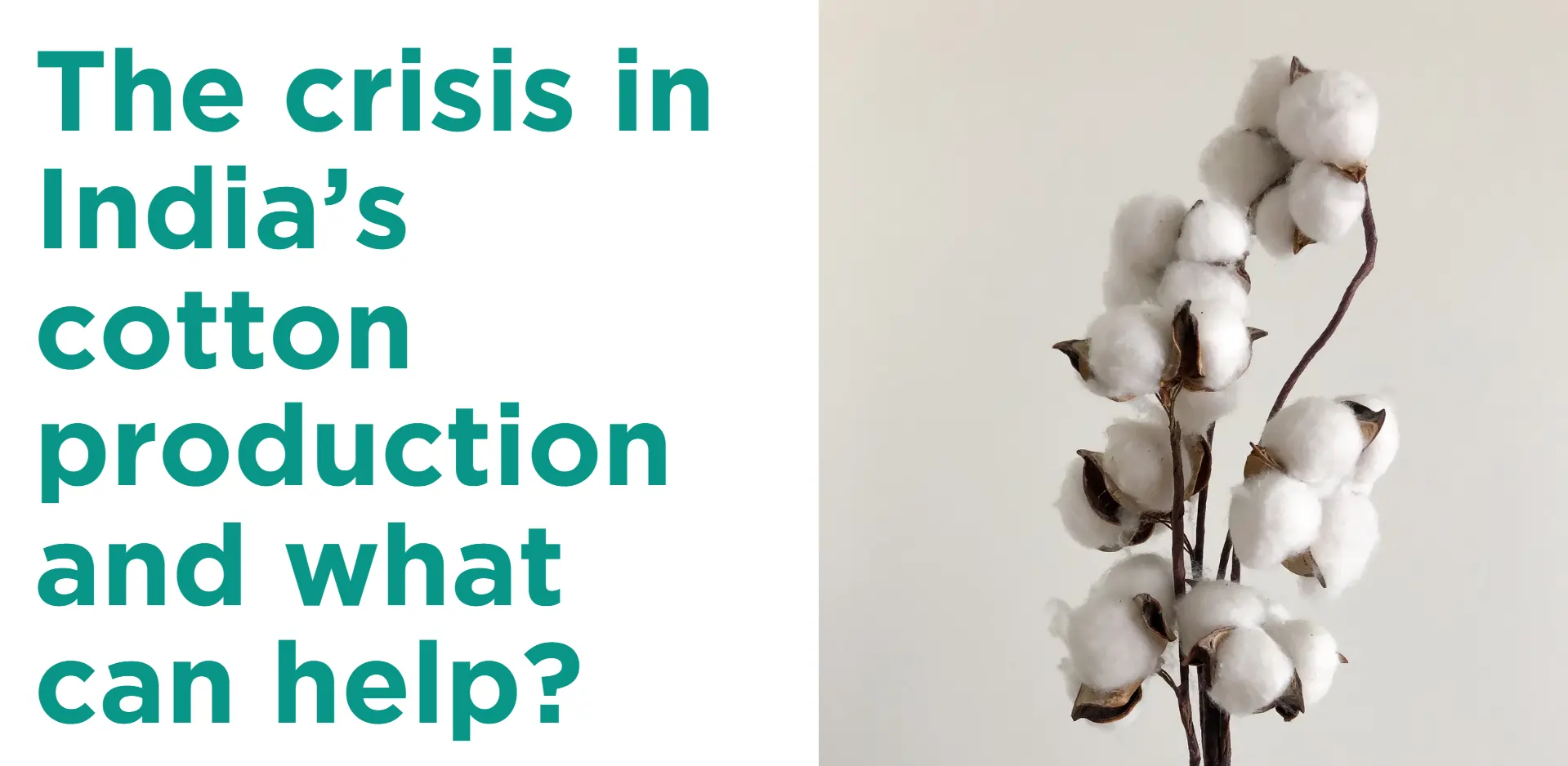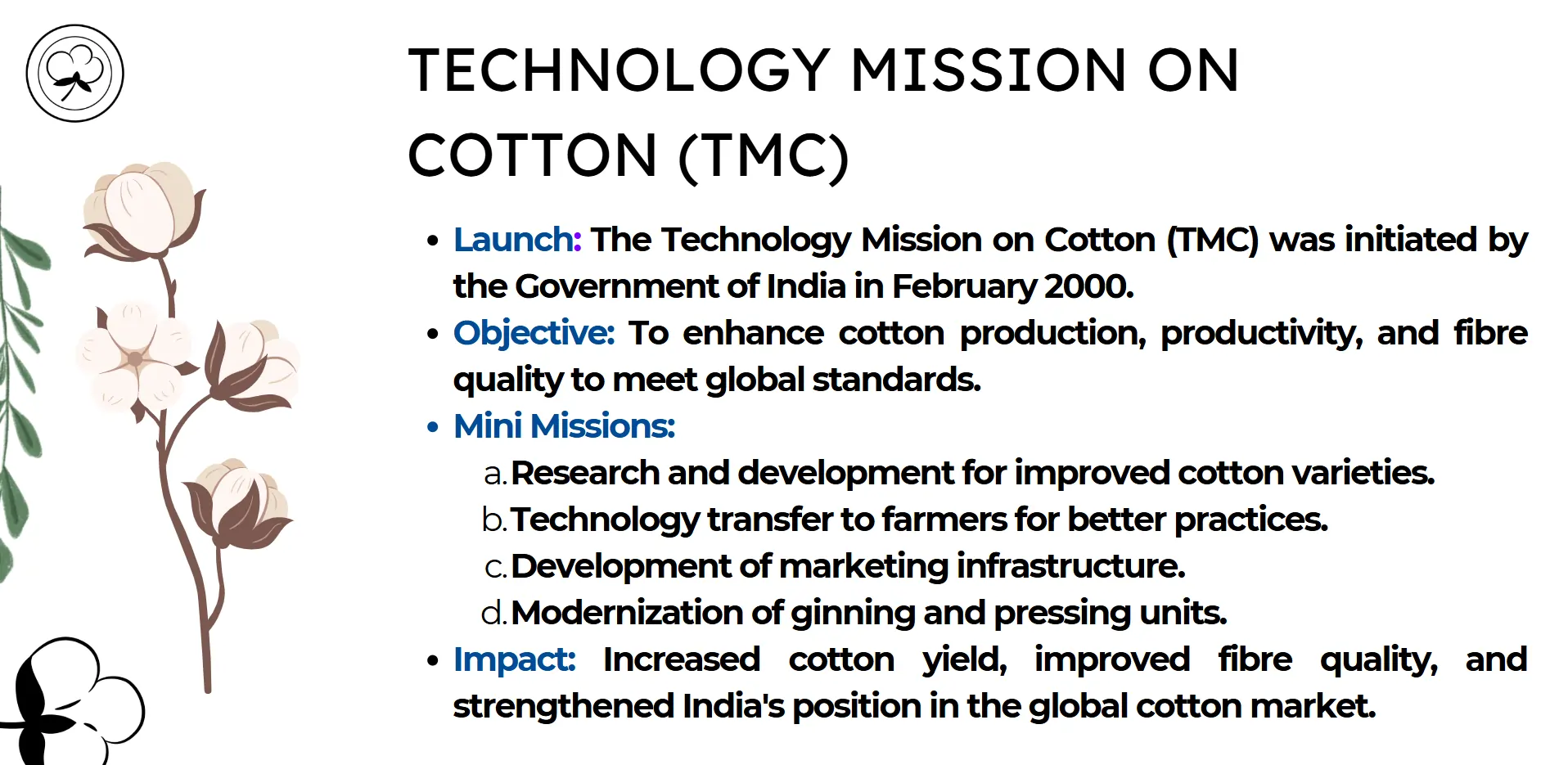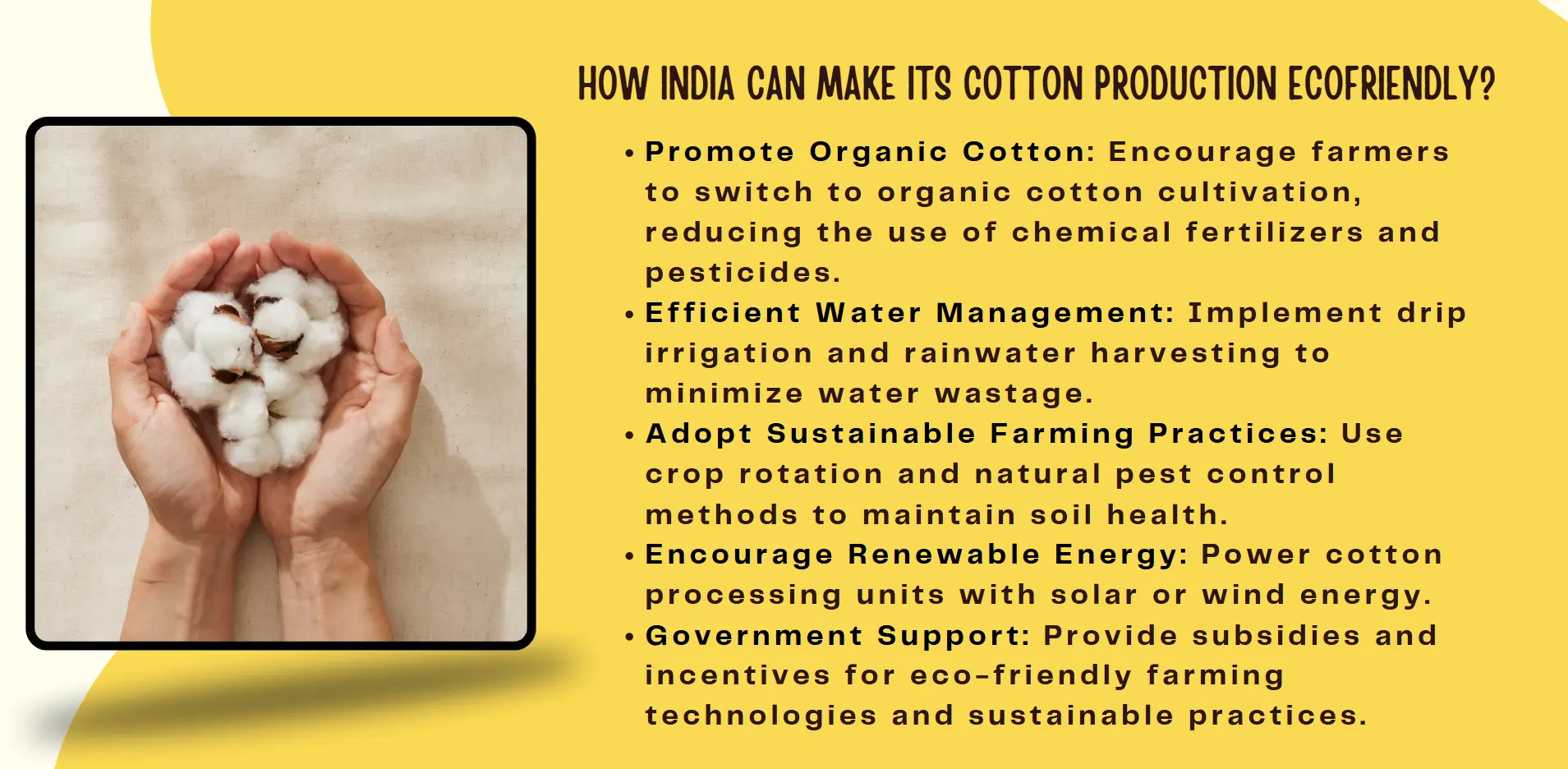During the previous decade the pink bollworm caused a 25% decrease in India's cotton production numbers. Regulatory barriers block market entry for genetically modified hybrids developed by seed companies because they protect against the damaging effects of dreaded insect pests.

Since ages the textile sector remains a vital economic factor along with being a guardian of Indian cultural traditions while showcasing centuries of expertise and development. The industry has achieved worldwide leader status for fibre manufacturing where it produces top-quality cotton alongside jute and silk fibers and synthetic materials. Despite being a top fibre producer the industry experiences slow growth together with declining exports. Bangladesh together with Vietnam has established themselves as strong industrial opponents to Indian textile exports in global markets. Indian textile manufacturing faces three core issues within its domestic market boundaries: insufficient infrastructure, higher production expenses and inadequate technology advancements with limitations for sustainability practices. The industry faces crucial examination regarding its future strategic approach as well as its helpful policy framework and ability to handle current market needs. An in-depth investigation of these field problems combined with innovative solutions would liberate India’s textile industry to dominate economic growth while becoming a leading participant in international commerce.
India’s Dominance in Fibre Production
Fibre production leadership positions in the world belong to India because of both its extensive agricultural wealth and climate-friendly environment. As the world’s leading Extra-Long Staple (ELS) cotton producer India also emerges as a major global player in jute and it produces substantial amounts of silk wool alongside synthetic fibers. The fiber-producing areas of India including Gujarat, Maharashtra, Tamil Nadu, Punjab and Andhra Pradesh have grown significantly because of appropriate soil quality and plentiful raw materials together with trained workers. India leads globally because of its crucial position in the worldwide textile sector. India produces major quantities of fiber due to its extensive propagation of cotton. Cotton production in the country exceeds 25% of worldwide output due to extensive farming distribution and multiple producer levels from many different scales. The jute farming sector based in West Bengal maintains its crucial market status worldwide. The country ranks as the second-largest silk producer worldwide and Karnataka stands as the main center for high-quality mulberry silk production.
The Technology Mission on Cotton (TMC) along with jute promotion through National Jute Board represents government initiatives that support fiber output growth. The Indian government invests research funding to improve both fibre qualities together with sustainable cultivation methods to fulfil increasing national and international market requirements.

India leads the world in fibre output but the industrial sector encounters obstacles that prevent the realization of these manufacturing advantages as economic benefits. The complete exploitation of fibre production capabilities is restricted by insufficient supply chain organization together with insufficient processing technology implementation and minimal technology adoption.
India keeps its position at the top for fibre production which creates vast possibilities for the textile sector. The nation should resolve its current inefficiencies to use its world-class fibre output capability for advancing textile sector expansion and market leadership.
Growth Stagnation in the Textile Industry
The textile industry of India showed remarkable growth during past times before it experienced steady growth stagnation across its recent annual performance. Fibre production leadership position has not prevented industry expansion because multiple internal and external challenges exist. The existing challenges affect both the Indian domestic market performance and India's international market competitiveness.
Supply Chain
The split nature of the supply chain functions as a leading cause behind industry slowdowns. Most production within this sector depends on small and medium enterprises (SMEs) but they struggle to obtain modern machinery and technological equipment. Production rates as well as product quality suffer while scaling operations remain limited because of this efficiency gap which places Indian textile production behind Vietnam and Bangladesh competition. The substandard state of infrastructure including basic facilities and transportation challenges worsens operational expenses and hampers competition for the industry.
Research and development R&D
Research and development (R&D) receives insufficient attention from investors which remains a key issue for development. Growth requires innovation in the Indian textile industry but insufficient attention has been paid to process updates as well as sustainable methodology implementation and innovative product creation. Because of these factors the textile industry fails to fulfil contemporary market needs for premium sustainable fabrics.
Workforce difficulties
The situation becomes more problematic due to workforce difficulties. Even though the sector hires numerous people it faces difficulties because professional development programs fail to teach workers how to use new technological systems. The lack of proper skills diminishes productivity levels and promotes slowing performance.
Policy hurdles
Business activities face additional challenges because policy hurdles include confusing tax systems and inconsistent trade regulations. The Production Linked Incentive (PLI) program established by the government to assist the industry encounters implementation difficulties which reduce its effectiveness.
Declining Exports and Global Competition
The textile sector in India used to generate major exports for the national economy but now suffers from substantial yearly decline. As a world-leading producer of fibre materials India fights an increasing battle to sustain its market dominance overseas. Internal operational problems combined with increasing world market competition lead to this downward trend.
Competiveness
The main production expense barrier in India remains one of the key challenges. Indian textiles face deteriorating price competiveness because rising expenses for materials and energy as well as labor costs have taken their toll on prices. Bangladesh together with Vietnam has achieved success in the global textile market because they maintain lower costs and efficient production methods. The efficient operation of their supply chains with support from their national government allows them to produce high-quality products at competitive prices thus creating a dominant market position for them.
Rising demand for sustainable product
The textile industry of India fights to transform its operations toward new consumer patterns as well as worldwide fashion directions. The need for sustainable and eco-friendly textile production by international buyers is driving the market but many Indian manufacturers fall behind due to their lack of sustainable innovation investment. The difference in export competitiveness between India and its competitors has expanded because of this factor.
Regulation Hurdles
Trade regulations together with multi-national accords shape crucial conditions in the market. The Indian exporting industry suffers decreased market appeal in lucrative trade regions because rival countries secured tariff-discount agreements with major importers including the European Union and the United States.
The reduction in exports requires India to immediately confront existing market obstacles. There is a need to update production methods as well as implement sustainable practices and create improved product specifications. Improving trade policies together with strategic agreement acquisition and innovation development play equal significance in industrial success. Addressing these market obstacles will enable India to restore its leading textile export position so it can maximize global sector development opportunities.
Internal Issues Affecting the Industry
From its vast market potential the Indian textile industry battles several internal obstacles which limit both expansion and foreign competition opportunities. Multiple systemic problems affect the industry through workforce management while infrastructure development and environmental preservation together with innovation-related aspects need immediate attention.
- The most critical barrier in this sector involves controlling employee staffing. The textile sector maintains millions of workers yet many employees lack proper skills in their work. Lack of modern technology training alongside advanced production knowledge among workforce members leads directly to reduced productivity and diminished product quality. Workplace issues of wage inequality together with substandard work settings within specific areas negatively affect the industries performance.
- Industrial operations suffer severe negative effects because of their inadequate infrastructure standards. The execution of dated equipment together with inappropriate processing facilities and faulty logistics systems drives up operational costs. Indian manufacturers who operate through disorganized supply chains cannot achieve size-based competitive advantages leading to decreased business success against oriented companies.
- Protection of the environment represents a critical inner factor for the industry. Various international sustainability initiatives force Indian textile manufacturers to adopt eco-friendly manufacturing practices. The lack of sustainable technology adoption by small and medium enterprises becomes a barrier to attracting international consumers because of inadequate funding.
- The textile industry fails to reach its full growth potential because there is a shortage of research activities along with inadequate development initiatives through R&D. The textile industry in India confronts difficulties when trying to match market trends because competitors invest generously to make high-quality product enhancements. Modernization standards within the industry stay minimal thus hindering its premium production ability for markets interested in international unique products.
A comprehensive systematic approach will solve the internal issues. To achieve influential growth in the Indian textile sector worker development alongside factory modernization with sustainable standards and research funding must be established. The textile industry of India needs to overcome these obstacles to achieve peak production along with re-establishing global market leadership in its segment.
Policy and Strategic Gaps
The Indian textile industry maintains substantial potential even though major policy and strategic weaknesses create obstacles for market growth and international market domination. Scarce official backing coupled with poorly defined regulations and restricted market outlook stands as the major sources of textile market troubles.
- The industry suffers from an important gap because it does not have a single unified policy framework. Several regulatory bodies managing the industry create complex and inefficient rules that lead to operational hurdles for businesses. The Goods and Services Tax (GST) taxation framework presents difficulties to small and medium enterprise (SMEs) operating in the textile industry. Non-standard implementation of export incentives introduced fresh obstacles that make it difficult for the industry to establish international market presence.
- The insufficient attention directed toward developing infrastructure stands out as a significant problem. Despite several government schemes, the sector still faces bottlenecks in terms of modern facilities, logistics, and supply chain integration. These production obstacles raise both manufacturing expenses and interfere with industrial capability to achieve internationally recognized quality requirements and efficiency.
- The growth of this industry faces strategic impediments because of its insufficient research-based innovation programs. India does not match competing nations when it comes to promoting technology innovations or sustainable operations or product expansion endeavours. Value addition deficiencies prevent the industry from efficiently entering upscale and minute product segments overseas.
- Trade policies require coherent strategic changes for improvement. The textile exporters from India face unfavourable trade regulations since neighbouring nations obtained lower import tariffs from major textile markets which impair their market competitiveness.
India requires a single policy structure that addresses regulatory simplification alongside innovation development and infrastructure improvement for closing these gaps. Sectoral trade agreements from the government combined with purposeful industry assistance can help India's textile sector recapture its dominance in both national growth along with international export markets.
The Road Ahead
India's textile industry needs a detailed strategy which tackles present issues while making the most of its existing capabilities in order to achieve revitalization. The sector can restore its market competitiveness through collaborative actions and strategic interventions across national and international markets.

- The modernization of infrastructure constitutes the first essential element. The industry needs investments to buy advanced equipment along with organized supply networks and modern processing centres that improve operational speed yet lower operational expenses. The installation of textile parks with combined facilities at industrial clusters enables manufacturers to compete with international businesses through operational optimization.
- The core status of sustainability needs immediate adoption. The industry needs to implement environmentally friendly technologies because consumers increasingly prefer environmentally friendly products. Through government sustainable initiative incentives together with partnerships with international organizations India can speed up its sustainable transition. Prioritizing both organic materials and eco-friendly production methods and solar power use will help India position itself as a leading sustainable textiles producer.
- The essentiality of driving both innovation and research categories stands third. The development of innovative high-value products through research and development enables companies to address market segments that serve customer requirements. The combination of industry participants with academic institutions alongside research organizations will produce technological progression along with modern fashion designs.
- Policy reform remains exceptionally important for the sector. The sector would receive substantial growth from tax simplification combined with consistent export incentives and beneficial trade agreements' implementation. The implementation of skills training programs will help fill staffing needs through worker education which enables them to operate modern equipment and methods.
The growth of economic sectors undergoes acceleration due to public-private partnerships (PPPs). Public-private partnerships between government entities and private businesses will enable the development of first-rate infrastructure while improving exports and drawing international investments.
Conclusion
The Indian textile industry faces pivotal times featuring vast opportunities while facing major obstacles. The country positions itself as a top worldwide producer of fibre while maintaining the capability to pursue international expansion through innovative growth strategies. India will benefit from a renewed industry through the solution of fundamental problems which include weak growth patterns and decreased exports alongside organizational flaws and strategic implementation problems. Through modernization combined with strategic reforms and sustainable practices the textile industry will strengthen its market competitiveness while elevating its contribution to the Indian economy as well as to the world textile market.